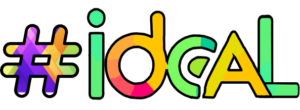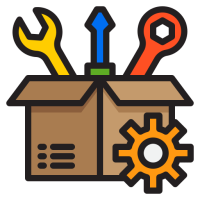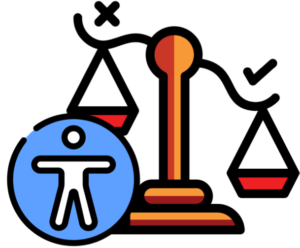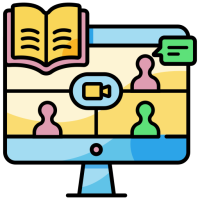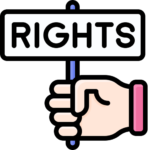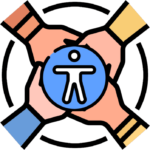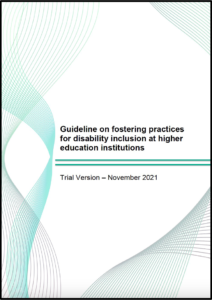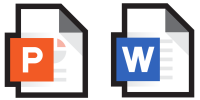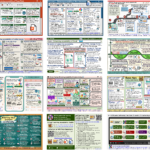Home
Let’s begin our journey towards the co-creation of accessible virtual learning!
Featured contents
Introduction of the Toolkit
Background
- This website is one of the deliverables of the Project entitled “Promoting accessibility of virtual teaching and learning through a train-the-trainer approach” funded by the UGC Special Grant for Strategic Development of Virtual Teaching and Learning in 2021-2023.
- This Project is an extension of a teaching development study entitled “Enhancing Learning Experience for Students with Visual Impairment in Higher Education” in 2019-2022.
Objectives
- To raise the awareness of the significance of accessibility of virtual teaching and learning.
- To provide systematic and practical guidelines and resources on creating accessible digital educational materials and virtual learning environment.
- To empower and facilitate staff members and students to promote accessible virtual teaching and learning in university education.
Suggested usage
- Step 1: Go through Rights-based guiding principles to understand basic concepts.
- Step 2: Go through Walk together – Roles and responsibility to understand more about how you could contribute to accessibility of virtual teaching and learning.
- Step 3: Identify and focus on particular sections related to the specific areas you are concerned about.
Examples of application
- Self-guided learning for anyone who are interested to learn more about digital accessibility and virtual teaching and learning.
- Training materials for university members, such as disability inclusion workshop materials.
- Practical resources for better equipping preservice teachers with digital accessibility awareness in relation to teaching and learning.
- Sharing and discussion among colleagues, students, peers, and anyone who are interested to learn more about digital accessibility and virtual teaching and learning.
Important points to note
- This Toolkit is intended to serve as a general guide for creating accessible digital materials and virtual learning environment. The recommended practices in this Toolkit are not exhaustive, definitive, or the best solutions for each situation. Teaching and learning practices might vary across academic disciplines, as well as individual preferences and needs. The recommended practices need to be fit and applied to various disciplinary contexts and authentic practices.
- Please be aware that fulfilling all the practices suggested by this Toolkit would not guarantee “full accessibility”. Use this Toolkit along with other resources, consideration of the contexts, and your own best judgment. Always be aware of and respect the diverse access needs of different individuals.
- Software, programmes, and operating systems are constantly and rapidly developing along with changing accessibility functions. Statements in this Toolkit about the accessibility-related functions of any software, programmes, and operating systems may no longer represent their current status.
- The Project team strives to provide up-to-date and correct information as well as functional hyperlinks of the cited resources in this Toolkit. However, it is possible that some of these resources might be edited or removed by the corresponding contributors after the publication of this Toolkit.
- This Toolkit does not contain any business promotion elements. The resources do not represent the viewpoint of the Project team.
- The recommended practices in this Toolkit are basically about accessibility to people with disabilities. However, the practices are central to good teaching and learning practices and will benefit all users regardless of disability status.
Suggested citation
- Ma, G. Y. K., Choi, C., & Yeung, P. P. S. (2023). Virtual Learning Accessibility Toolkit – Guidelines on accessible digital educational materials and virtual learning environment. HKU Data Repository. https://doi.org/10.25442/hku.22579006
- Ma, G. Y. K., Chan, B. L. F., Wu, F. K. Y., Ng, S. T. M., Ip, E. C. L., & Yeung, P. P. S. (2021). Enhancing Learning Experience for Students with Visual Impairment in Higher Education. Guideline on fostering practices for disability inclusion at higher education institutions. (Trial ed.). The University of Hong Kong. (146 pages.). https://doi.org/10.25442/hku.17032685
